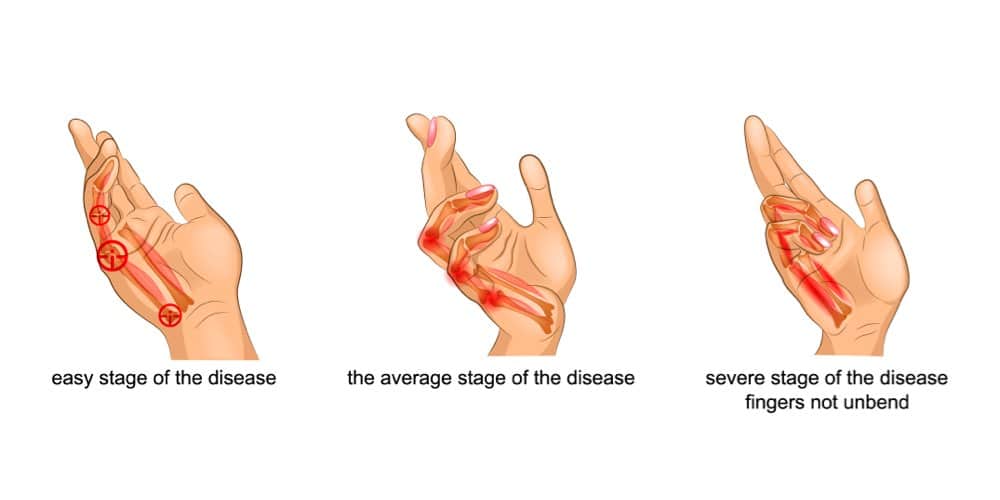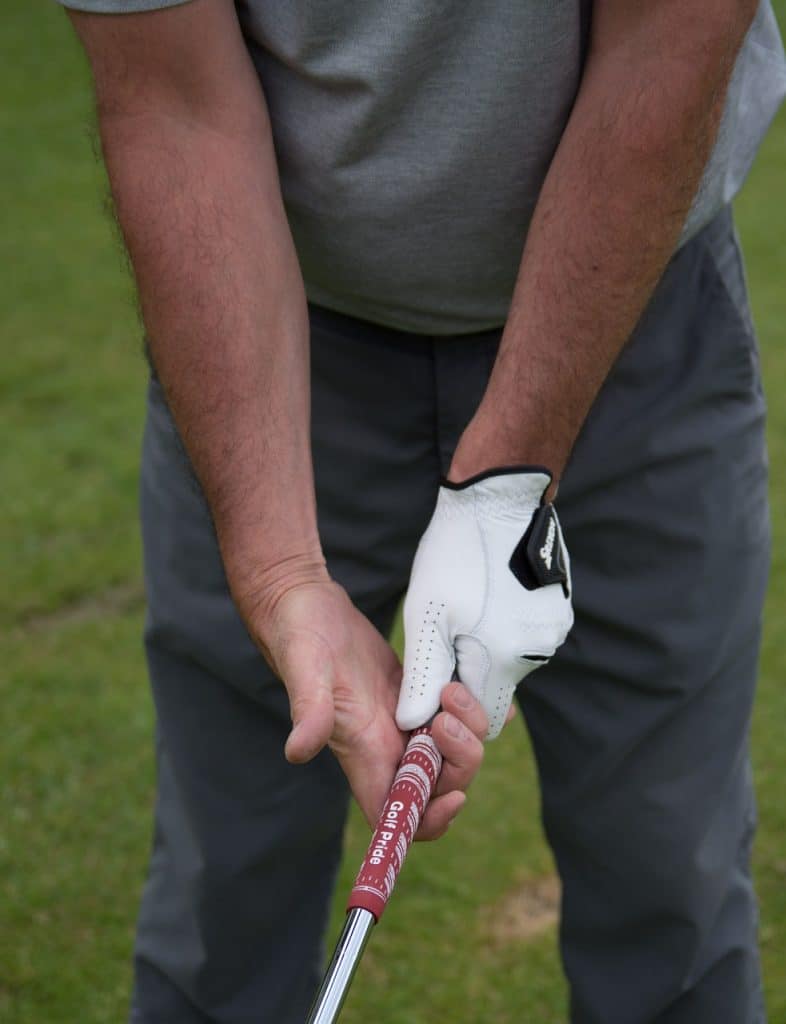Dupuytren’s Contracture: Symptoms, Causes & Treatments
It’s easy to take simple, day-to-day maneuvers for granted — putting on gloves, opening jars, or turning a doorknob. Easy, that is, until you start to lose those abilities. If you have a condition called Dupuytren’s contracture, simply laying your hand flat on a table or putting it into your pocket may eventually prove impossible.
For those affected, the symptoms of Dupuytren’s contracture develop slowly over time. The disease may impact one or both your hands and the treatment will vary depending on the severity of your symptoms.
Dupuytren’s Contracture Symptoms and Progression

The earliest stage of Dupuytren’s contracture, also known as Dupuytren’s disease, is generally the formation of one or more small lumps, or nodules, in the palm of your hand. The lumps are visually present just under the skin and may initially feel tender. For many, the painful sensation dissipates over time. You may also develop deep, indented pits in your skin near these nodules.
As the disease progresses, excess collagen production can cause cords to develop and stretch between the palm and the fingers. While these cords are tendon-like in appearance and touch, they are actually composed of abnormally thickened fibrous tissue called fascia. Unlike tendons, these fascial cords are not attached to muscle and do not move.
You may notice one cord or several, and they can be connected together or separate from one another. The cords are most commonly located on the ring and pinky fingers. They are tight and inhibit the normal function of the affected hand(s), often causing one or more of your fingers to remain bent in toward your palm. Depending on the severity of your condition, you may eventually need surgery to regain your range of motion and ability to perform normal daily activities.
Conditions like Dupuytren’s contracture can also occur in the feet, the male genitalia, or on top of the knuckles. Sometimes this condition is confused with trigger finger, although the two conditions are not the same and therefore do not require the same treatment. See a specialist to determine the cause of any issues you’re experiencing.
Causes
Dupuytren’s contracture is believed to be a hereditary condition, but its exact cause is unknown. However, certain populations are more likely to develop Dupuytren’s:
- Men
- Elderly
- Those of Scandinavian or Northern European heritage
- Smokers or heavy drinkers
- Those on seizure medications

When to See a Doctor for Dupuytren’s Contracture
Dupuytren’s contracture often begins with the formation of a lump in the palm of the hand, but not all lumps are Dupuytren’s. See a hand specialist for an examination to determine the cause of any lumps and to track any changes.
The disease usually progresses very slowly, often over a number of years. Early-stage Dupuytren’s contracture can be manageable and relatively unobtrusive. Your doctor may delay intervention if your symptoms are painless and non-impacting.
Over time, you may develop tight, activity-inhibiting cords that impact your daily activities and require surgery to correct. It’s important for your doctor to track these changes and recommend treatment as the condition progresses.
Treatment Options
There are both surgical and non-surgical treatment options for Dupuytren’s contracture, depending on the severity of the disease. The goal of any treatment is to improve your mobility and function, but these improvements are not cures. It is possible that nodules and cords will return even after treatment, but treatment enhances quality of life in more severe cases.
Surgical treatment for Dupuytren’s is generally the most comprehensive option and provides longer-lasting results. As part of your treatment, your orthopedic hand surgeon may:
- Cut the constricting cords but leave them in your hand
- Cut and remove as much of the nodule(s), cord(s), and affected skin as possible
- Stitch the incision closed to heal
- Leave the incision open to be covered with a Dupuytren’s contracture splint
- Prescribe Dupuytren’s contracture exercises to aid in your recovery
Non-surgical treatments include needle fasciotomy or enzyme injection. These options are used to puncture, break, soften, and weaken any movement-restricting cords. Work with your doctor to determine which treatment option is right for you.
Quality of Life with Dupuytren’s Contracture
Most people do not initially find Dupuytren’s contracture overly painful, but as the disease progresses, range of motion and functionality can impact your quality of life.
Stay active, retain the grip on your racquet or golf club, and don’t let Dupuytren’s contracture hold you back from fully living life at any age.
If you’re experiencing symptoms of Dupuytren’s contracture and would like to talk to an orthopedic surgeon, please contact us.
Leave a Reply